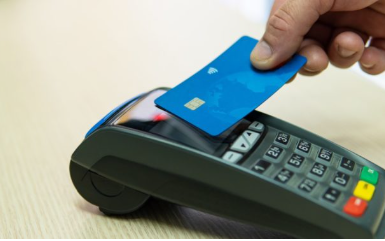The majority of credit cards include variable rates that are directly linked to the benchmark set by the Federal Reserve.
As a result, credit card rates increased in tandem with the Fed’s 11-rate rises that began in March 2022. At that time, the average annual percentage rate was 16.34%; today, it is above 20%, almost at an all-time high.
In September, however, the average credit card interest rate dropped by a mere 0.13% when the Fed began cutting interest rates, first by half a percentage point. Rates have since been lowered by another quarter point by the Fed.
Interest rates are continuing to rise for certain retail credit cards. According to Bankrate, during the previous 12 months, the average retail card rate rose by more than a full percentage point.

Just before the holiday shopping season, a second LendingTree survey found that the average store card interest rate had reached an all-time high, approaching 31%.
APRs on some retail cards have increased to as high as 35.99%, according to earlier reports from CNBC.
Why some APRs continue to rise
Store-branded credit card issuers Synchrony and Bread Financial have stated that the actions were required in response to a rule by the Consumer Financial Protection Bureau that restricts the amount of late fees that the business may impose.
Greg McBride, chief financial analyst at Bankrate.com, stated that trying to set limitations on fees frequently results in higher rates as one of its unexpected consequences.
He stated that card issuers are reducing their risk of default or payment arrears from borrowers.
“Since lowering the late fee doesn’t make late payments less likely, issuers will find other ways to offset that risk.” McBride stated.
Matt Schulz, chief credit analyst at LendingTree, stated, “It doesn’t surprise me that card issuers would try to get out in front of these changes.” This has been a highly lucrative company, but the new rule from the CFPB hurts it.
Additionally, Schulz stated that “there is a fair amount of risk in that,” as “stores want to be able to offer that card to anyone who walks up to the checkout counter.”

How to prevent paying exorbitant interest
High APRs only hurt customers that have a debt from month to month. Additionally, increased APRs only apply to new loans—not existing debts—such as when a new applicant applies for a store card or makes a purchase.
According to McBride, “rates are not going up on an existing balance.”
He clarified that changes in the APR only impact the entire amount if they are brought about by a shift in the underlying index, such as a rise or fall in the Fed’s benchmark.
Otherwise, McBride stated, “the issuer can only raise the rate on an existing balance if the cardholder is 60 days past due, which would mean raising the margin over prime rate.”
The percentage of debtors with revolving amounts is increasing as more individuals accrue additional debt over the holidays, and credit card default rates are already “elevated,” with 8.8% of balances going into delinquent over the past year.
According to the Federal Reserve Bank of New York, Americans currently owe a record $1.17 trillion on their credit cards, which is 8.1% more than they did a year ago.
During the busiest shopping season, McBride cautions customers against applying for a retail credit card with a high interest rate.
“This time of year, store cards are really popular,” he remarked. “It’s tempting to have that same-day discount dangled in front of you, but if you start carrying a balance, you quickly lose the benefit of the discount.”
According to Schulz, “paying your bill in full each month is the best way to avoid these sky-high rates — that is easier said than done, but should always be the goal.”
Credit card benefits and a higher credit score are also available to cardholders who maintain their usage rate, or the ratio of debt to total credit, below 30% of their available credit and pay off their obligations in whole and on time. That opens the door to future loans with better terms and reduced costs.





